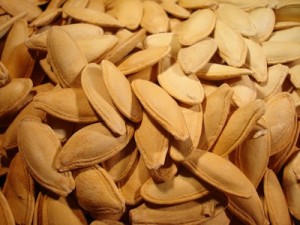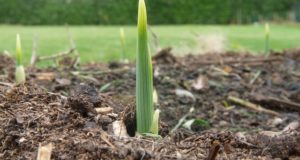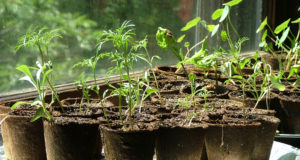For thousands of years people have been preserving seeds, and not just for consumption. Properly stored seeds ensure that farmers have seeds to plant new crops the following year, and they also ensure the survival of healthy plant strains. The entire foundation of agriculture stemmed from human’s discovering that properly stored seeds can result in an abundance of crops the following year.
As agricultural practices have changed dramatically over the last several decades, so has the practice of saving seeds. Many farmers have found it a lot less efficient to save their seeds than it is to simply order new seeds from a large commercial seed companies. Not only are local strains not being saved each year, but traditional crops that typically grow really well in one particular area are being replaced by genetically modified crops that have been enhanced in order to grow in various growing zones. This threatens the survival of thousands of plants and also has the potential for long-lasting effects on our soil and on our overall health.
 An unfortunate side-effect of using the ever popular hybridized seeds is that even if you save seeds from the fruit that they produce, there are no guarantees that the new generation will produce true between generations. In many cases the hybrid seeds will produce plants that are genetically sound for the first generation or two, but the following generations are often less robust and have less desirable traits. What this leads to is farmers becoming reliant on commercial seed companies in order to maintain their strong harvests.
An unfortunate side-effect of using the ever popular hybridized seeds is that even if you save seeds from the fruit that they produce, there are no guarantees that the new generation will produce true between generations. In many cases the hybrid seeds will produce plants that are genetically sound for the first generation or two, but the following generations are often less robust and have less desirable traits. What this leads to is farmers becoming reliant on commercial seed companies in order to maintain their strong harvests.
Another alarming fact is that it can be illegal for farmers (regardless of the size of their operation) to save the seeds that resulted from plants they grew from commercially produced seeds. So what can you do in order to ensure you are not only growing healthy plants from healthy seeds, but also to ensure that you have plenty of seeds preserved to use year after year in order to keep productive harvests rolling out of your fields?
First and foremost, you should use only heirloom seeds. Heirloom seeds are, as the name suggests, a means of protecting healthy strains of fruits and vegetables that have not been genetically modified or grown commercially. There are many companies that sell heirloom seed readiness kits that will give those wishing to live self-sustainably everything that they need in order to grow healthy fruits and vegetables for their family.
There are numerous methods of storing seeds, but the most effective methods will ensure that your seeds do not rot and that they are viable when planted for the next round of crops. First and foremost you should have a focus on harvesting your seeds.
How the seeds are treated when harvested and stored can have a major impact on their viability, and without such care, you will likely end up with seeds that are too immature or unhealthy to grow productive crops.
Seed Fermentation
If you are not already aware of seed fermentation then you should take the time to learn more about it. The seed fermentation process of so-called wet seeds, which are typically plants like tomatoes, will actually serve a dual purpose. It will help to prevent the seeds from rotting during storage, and it will help to improve their sprouting ability. It can be a bit of a smelly and lengthy process, but fermenting the seeds will help you in the long run, so it is worth the extra effort.
The purposeful fermentation of wet seeds like tomatoes, eggplants, cucumbers, and peppers actually mimics the process that occurs naturally when ripe vegetables and fruit are eaten by animals or they drop off of the plants and start to rot. When we pick the vegetables and fruit at a peak time for us to eat them, the seeds may be mature, but they have not completed the natural ripening process.
Step-by-step Techniques for Collecting and Growing More Than 100 Vegetables, Flowers, and Herbs
Fermenting the seeds requires a few steps, but once you get into the rhythm of doing it, you’ll have no problem fermenting and preserving your seed.
- Gather the seeds together, along with the pulp that typically surrounds them.
- Place the seeds into a jar or a bowl with just enough water to cover the seeds.
- Store the seeds in a warm place that is between 75 and 85 degrees Fahrenheit until you start to see the formation of white bubbling mold. This should typically take anywhere from one to three days.
- Pour the seeds into a larger bowl and add clean water. The healthy seeds should sink to the bottom of the bowl, and the unviable seeds should float, along with the bulk of the seed pulp.
- Skim the top of the water to remove the pulp and unviable seeds.
- Using a very fine colander, rinse the remaining healthy seeds several times, rubbing them with your fingers in order to remove the remaining pulp.
- Allow the seeds to dry in a strainer and place them on a cloth towel to help pull out excess moisture from the seeds.
- Spread the seeds out on a glass plate or tray and allow them to dry in a dry, cool, and shaded place for up to three days.
Once the seeds have thoroughly dried, you can store them in jars or in airtight containers stored in the freezer. Keep a close eye on the temperature, especially when working with pumpkin and cucumber seeds that tend to sprout rapidly. If you leave them too long then you run the risk of them prematurely sprouting. If the seeds start to swell then they have started the internal germination process, and it will be too late to try and store them. They can be planted as soon as their roots emerge, but they will no longer be viable for storage. In general, you’ll have no problems if you keep temperatures between 75 and 85 degrees Fahrenheit and check on your fermentation bowls daily.
Dry Harvesting
While you can certainly leave your tomatoes, eggplants, and cucumbers on the vine to wholly ripen and start to rot and dry out, you also run the risks of attracting unwanted pests into the garden. Vegetables that are allowed to fully mature on the plants will often result in the plant shutting down the process of creating new fruit, because in the natural way of doing things, the plant has done its job to procreate. This is why so many types of vegetables are recommended as being picked early and often, before they are allowed to mature.
The majority of gardeners who save their own seeds will tell you that if you leave the last dozen pods or fruit on the vines at the end of the growing season then you’ll have ready-to-store seeds just waiting for you.
Consider what happens when peas or beans are left on the vine. The pods start to shrivel and dry up. As the pods dry up, so do the seeds inside of them. The end result should be pods that can be picked, opened up, and the seeds easily harvested out. Okra, peppers, onions, and basil all make it easy to dry harvest seeds once they have been allowed to dry out.
The seeds can be safely stored in airtight containers or stored in the freezer for up to two years. Countless people have opened up their grandparent’s freezers, only to find stored heirloom seeds from forty years ago. It is very exciting when these seeds germinate and grow healthy plants of varieties often not seen in decades. Before you open containers of seeds that have been stored in the freezer, allow the container to warm up to room temperature.
A huge problem often seen with seed preservation is that weevils and other little unwanted pests can make their way into containers and make short work of your beautifully dried seeds. A simple fix to this is to either freeze the seeds or add some diatomaceous earth to the seed jars. The diatomaceous earth will simply just coat each seed and offer you an affordable and non-toxic means of keeping your seed stash safe from predatory insects that would otherwise make short work of it.
©2012 Off the Grid News
 Off The Grid News Better Ideas For Off The Grid Living
Off The Grid News Better Ideas For Off The Grid Living




